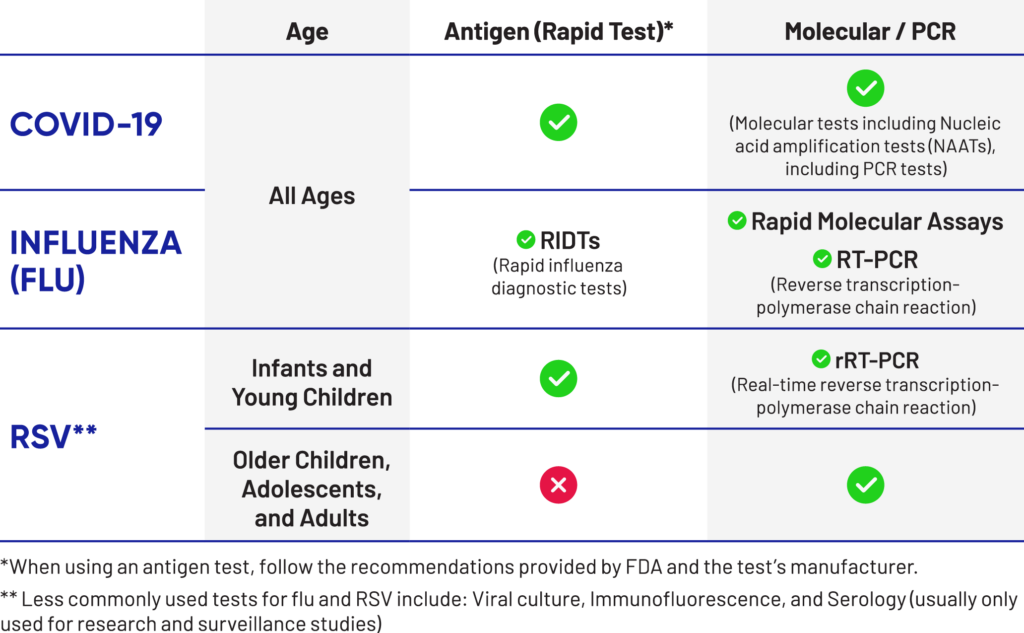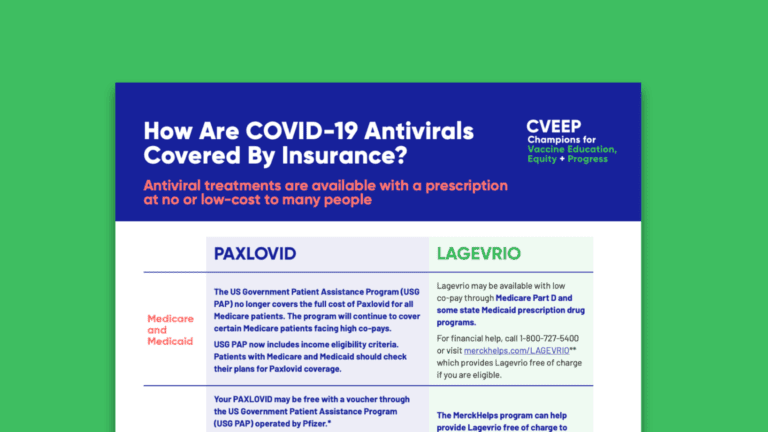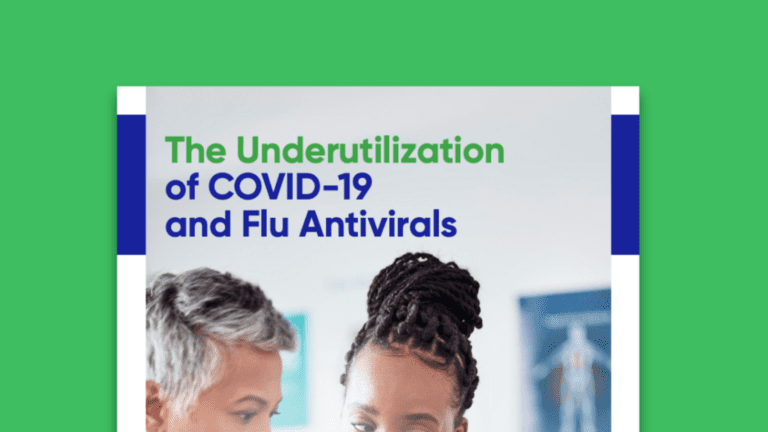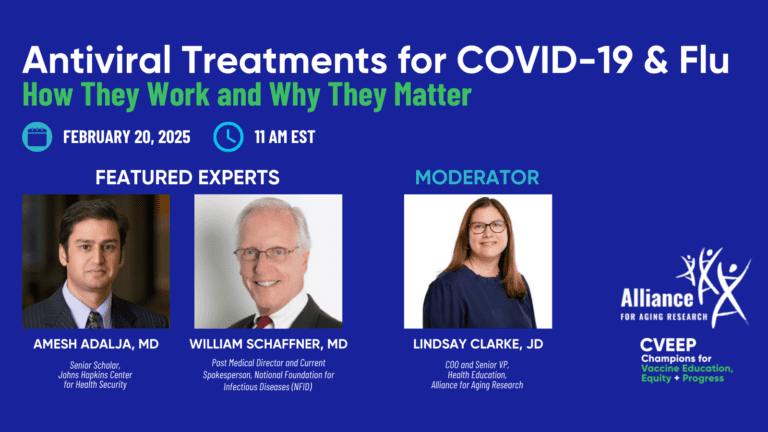Testing & Detection
Need vaccine information?
Check out the resources below.
Is it COVID-19, flu, or RSV? Early testing matters.
Learn more about the importance of early testing, the types of tests available, timing for testing, and how to understand your results.
Why is early testing important?
The first symptoms of respiratory viruses like COVID-19, influenza (flu), and respiratory syncytial virus (RSV), and even the common cold, can be very similar. With symptoms like fever, cough, sore throat, congestion, fatigue, headache, and muscle and body aches, it can be challenging to know which illness you may be dealing with, but knowing what you have can make all the difference in your treatment and recovery.
In many cases – especially in healthy children and adults – COVID-19, flu, and RSV infections will clear up within a week or two and most symptoms can be treated with over-the-counter medications such as ibuprofen or acetaminophen.
But these diseases are highly contagious and can be dangerous for many others, including children under 5, older adults, and people with chronic health conditions and weakened immune systems. These respiratory viruses can cause serious illness and even death, so early diagnosis, steps to reduce spreading the disease (hand washing, isolation, etc.), and treatment are important.
Early testing is important:
- To get an accurate diagnosis: Testing is the only way to learn which virus you may have. This is important because how and if illnesses can be treated can be very different.
- For treatment: Knowing which virus you may have can help ensure that you get the right treatment. This can lead to faster recovery times and reduce the risk of complications.
What kind of tests exist?
There are several tests available to detect COVID-19, flu, and RSV.
- Antigen tests – also known as “rapid” or “at-home” tests – check a fluid sample from your nose for certain proteins (antigens) from the virus. These are easy-to-use tests that provide fast results — usually in 15-20 minutes or less. These tests can be done at home or at the “point of care” in a healthcare provider’s office or urgent care.
- Positive results are accurate and reliable. However, in general, antigen tests are less likely to detect the virus than molecular tests, especially when symptoms are not present. To increase the accuracy of an at-home antigen test, it is important to repeat the test 48 hours after getting a negative test result to lower the risk of a false negative result.
- Molecular tests, such as polymerase chain reaction (PCR) and other nucleic acid amplification tests (NAAT) tests, use a sample from your nose or mouth to check for genetic material from the virus. These tests can detect smaller amounts of the virus in the sample than antigen tests and give more accurate results. PCR tests are often used to confirm results of at-home rapid tests for COVID-19. There are two types of PCR tests that can be used at home:
- The Food and Drug Administration (FDA) has authorized a molecular combination test for COVID-19 and flu that is available for use as a point of care test and for at-home testing (Lucira). For at-home testing, a single use kit provides results from a self-collected nasal swab sample in about 30 minutes.
- The FDA has also approved a combination at-home collection kit for COVID-19, flu, and RSV (Pixel). The results are not immediate. The test allows you to collect your nasal swab sample, send your kit to the manufacturers lab (Labcorp), and the results will be returned to you in 1 or 2 days.

When should I test?
- If you have symptoms. Tests for COVID-19, flu, or RSV should be taken during the first few days after symptoms begin, and you should test again if your first result is negative.
- If you’ve been near someone who is sick. If you were exposed to someone who has COVID-19, flu, or RSV and you do not have symptoms, wait at least 5 full days after your exposure before testing. If you test too early, you may have an inaccurate result.
What do my test results mean?
Taking an at-home test for COVID-19, flu, or RSV will show either a positive or negative result.
- If your test is negative, it means the virus was not detected, but you may still have an infection.
- Whether you have symptoms or not, it is important to repeat the test after 48 hours to confirm your results and contact a healthcare provider if you have any questions about your test result.
- If your result is positive, it means you are infected with a virus.
- Monitor your symptoms. If you have trouble breathing, chest pain, or other worsening symptoms, seek emergency care immediately.
- If you have risk factors for severe illness, treatment may be an option to make your symptoms less severe and shorten the time you are sick. Antiviral treatments must be started within a few days of when symptoms first begin. (While there is no specific treatment for RSV, there are things that can be done to help relieve symptoms.)


